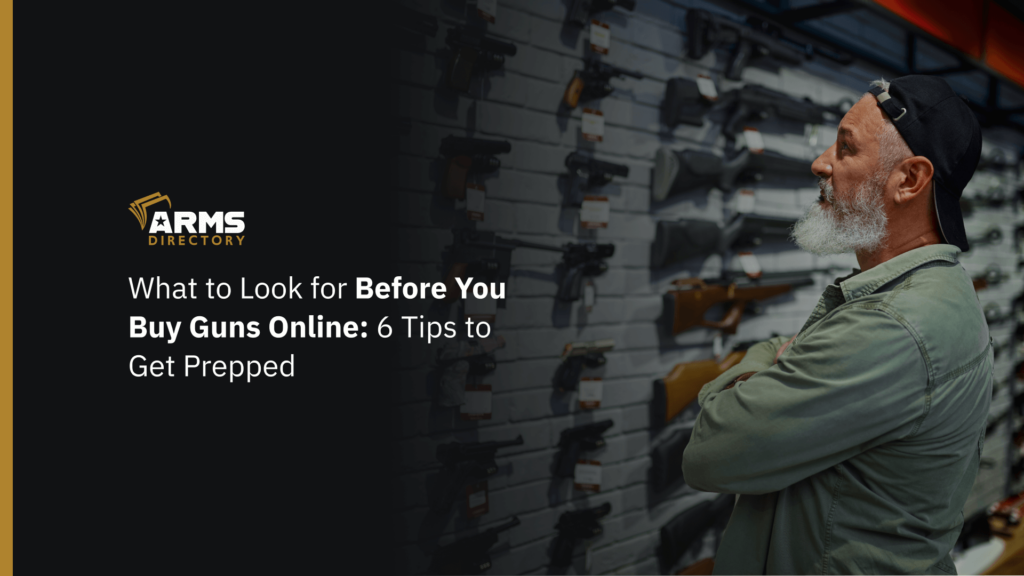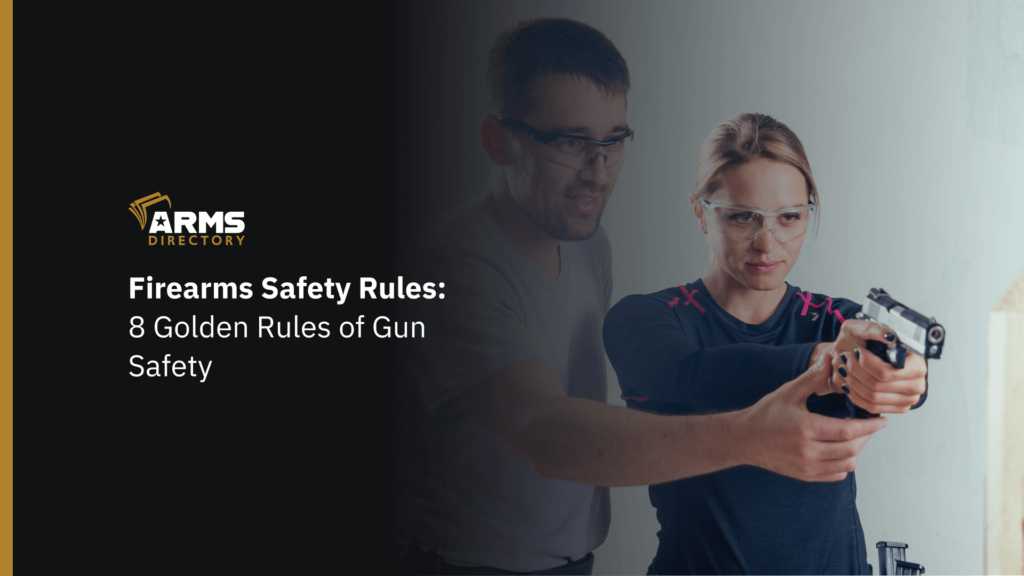
Firearms Safety Rules: 8 Golden Rules of Gun Safety
Firearms safety rules are an essential aspect of responsible gun ownership. By following them, we can ensure that guns remain in the right hands. Personal responsibility and safety awareness also preserve our constitutional freedoms and help ensure our passion is safe for generations to come.
In this article, we will be sharing some simple yet effective ways to protect lives and continue the American tradition of safe gun ownership.
It’s important to mention that gun ownership also involves knowing the regulations and requirements for owning firearms, which may vary depending on the state. By staying informed, we can ensure that we are using our guns safely and responsibly.
Knowledge is power when handling firearms, so let’s explore some key safety basics that everyone should know. Keep reading!
Why You Should Follow Firearms Safety Rules
Following basic gun safety rules is critical if you want to use firearms properly. These rules aren’t random either – they come from experience, statistics, and common sense.
Let’s take a look at why you should follow them:
- They prevent accidents. The rules help avoid accidents and keep your gun pointed in a safe direction.
- The rules protect your family and friends. Responsible gun ownership means keeping everyone around you safe too.
- They keep you from breaking the law. Many places have strict protocols about gun safety. Follow the rules to avoid legal issues.
- The rules help preserve your gun rights. Reckless owners make people want stricter gun control. Don’t let that happen.
- You will build good habits for the range and when around others. Following the rules every time makes safety second nature.
- You will improve your skills. Safety helps you concentrate on accuracy and get better at shooting.
Basically, following gun safety rules isn’t optional. The rules save lives, prevent accidents, and protect your Second Amendment rights while making you a more responsible citizen.
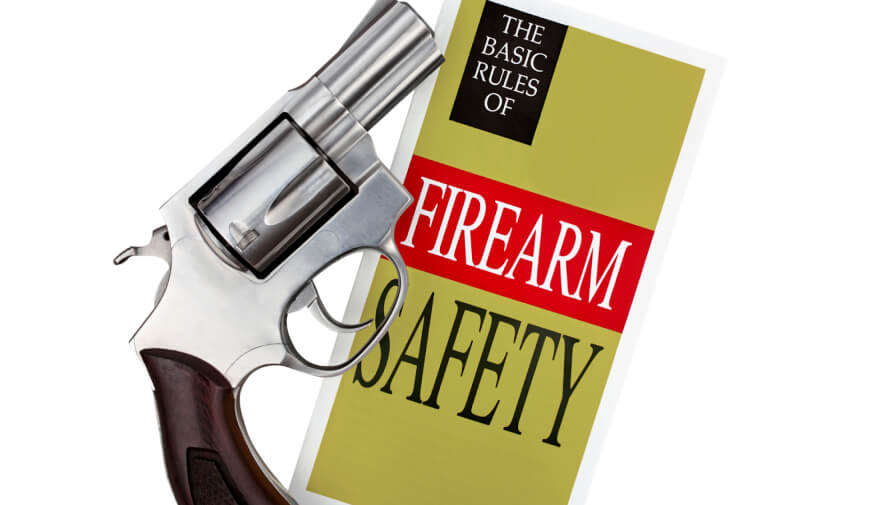
Rule 1 – Always Treat Every Firearm as if It’s Loaded
This rule exists for a good reason – it helps prevent accidental shootings.
Even if you’ve visually and physically checked that a gun is unloaded, you should still handle it as if it were. Why? For one, you or someone else could have made a mistake when checking the gun’s status. Additionally, a gun can appear unloaded when in fact there is still ammunition in the chamber or magazine.
Assuming a firearm is empty when it’s not leads to complacency, which is responsible for many unintentional discharges. These kinds of accidental shootings often occur when someone believes a gun isn’t loaded, points it in an unsafe direction, and pulls the trigger. Tragically, this has resulted in injuries and deaths.
The core lesson here is to always exercise extreme caution and assume that every firearm could discharge. Establishing this as an ironclad rule and habit is the bedrock of good firearms safety.
Rule 2 – Keep the Muzzle Pointed in a Safe Direction
The second rule is to always keep the muzzle of your gun pointed in a safe direction. This means controlling the direction of the barrel and where it would discharge if the gun were to go off.
The ideal direction is “downrange” – towards the backstop or berm at a shooting range, away from bystanders and areas where unintended damage or injury could occur.
Even when you are certain a gun is unloaded, keeping the muzzle aimed in a safe direction is vital.
Some unsafe directions could be pointing the muzzle upwards, sideways, in a direction where there are people (even if they are behind a barrier), or simply swinging it around haphazardly.
The consequences of pointing the gun’s muzzle at yourself or others are obvious and disastrous. Safe muzzle direction is a mindset – use it every time you pick up a gun.
Rule 3 – Learn Trigger Discipline
The third key firearms safety rule requires keeping your finger off the trigger until you are ready to fire. Your trigger finger should remain straight, resting outside the trigger guard until you have made the conscious decision to shoot.
Maintaining trigger discipline helps build muscle memory. Keeping your finger outside the guard until your sights are on target and you have decided to shoot greatly reduces the likelihood of accidents.
Rule 4 – Know Your Target and What’s Beyond It
The fourth vital rule of gun safety is to know your target and what lies beyond it before firing.
Before squeezing the trigger, verify the target. Be aware of the surroundings and the backdrop, consider the terrain, buildings, vehicles, and other objects which could be penetrated by a stray bullet or by one that has passed through the target.
Also be mindful of movement, regularly scanning the area around and beyond the target for any potential danger. If you are at all uncertain that the entire area behind and/or around your target is unclear and not safe, do not take the shot.
Тaking those extra moments to thoroughly evaluate your target and its surroundings helps guarantee you hit your target safely.
Rule 5 – Properly Storing Guns When Not in Use
The fifth key rule involves the proper storage of guns when not in use. All firearms must be stored in a secure, protective manner to prevent unauthorized access or use.
Here are a few tips:
- When storing firearms, ensure they are unloaded and use gun locks such as chamber locks or cable locks.
- Keep ammunition stored separately from firearms. Options for safe storage include a gun safe, lockbox, or locked cabinet or closet.
- Use mounting hardware to secure storage units when possible. For ultimate minor protection, utilize biometric safes with fingerprint access.
- Carefully position locking devices out of reach and sight of children.
- Take note of local laws, which may require specific storage standards. Unauthorized handling due to unsecured firearms leads to accidental shootings, suicides, and gun thefts.
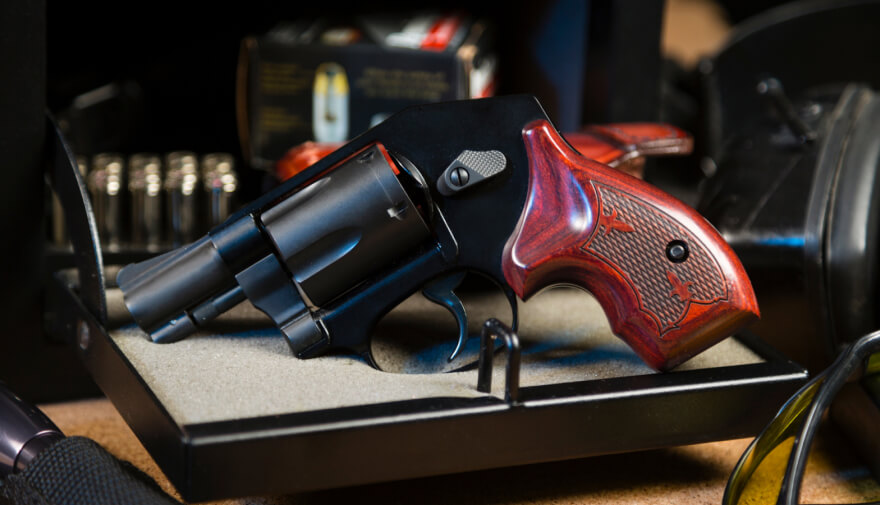
Rule 6 – Take a Firearms Safety Course
The sixth crucial rule is to complete a formal training and firearm safety course. While self-education is valuable, professional instruction provides a controlled, supervised environment to practice proper gun handling.
Certified classes reinforce essential safety rules, not only teach proper loading/unloading, guide stance and grip, they can help improve marksmanship, and cultivate good gun habits.
Hands-on training also ensures you understand the correct operational procedures for your specific firearm types thanks to a skilled instructor.
For ultimate protection, seek out courses covering concealed carry, self-defense laws, conflict avoidance, and live-fire exercises. Look for NRA-certified instructors, concealed carry courses, and local gun ranges offering classes. With the convenience of online learning, firearms safety online courses can supplement hands-on training.
Rule 7 – Learn How to Clean a Gun Safely
Proper cleaning and maintenance is an essential component of safe firearms handling. Cleaning requires the same safety protocols as shooting, like verifying the gun is unloaded and pointed in a safe direction.
Here is how to clean a gun safely:
- Point the muzzle in a safe direction, remove the magazine, and physically check that the chamber is empty.
- Engage available safety mechanisms like a manual safety or slide lock.
- Select your cleaning supplies like solvent, lubricant, brush, and cloth. Avoid excessive use of solvents.
- Wipe down the major components like the barrel, slide, and cylinder with your brush and cloth using controlled motions.
- Use your bore brush to clean the barrel from the chamber end, not the muzzle.
- Follow up with lubricating oil on moving parts like the rails and pins. Avoid over-oiling.
- Recheck that the gun is empty after cleaning, then store it securely.
Maintaining good safety habits during cleaning prevents avoidable mishaps. Responsible gun owners commit to regular, safe cleaning routines.
Rule 8 – Shotgun Safety: Additional Considerations
Shotguns require some unique safety considerations compared to other firearms. Given their large smoothbore design, shotguns have wider spray patterns and shorter effective ranges than rifles or handguns.
- When handling a shotgun, be especially aware of your surroundings as pellet spread can be dangerous at close distances.
- Keep your finger off the trigger until ready to fire as unintended discharges from pumping a shotgun can easily occur.
- Never point your gun at yourself or others.
- When loading, open the action fully and visually inspect the feeding path and chamber to verify they are clear of obstructions.
- After firing, pump the shotgun multiple times to eject any remaining shells rather than relying on the ejection port.
- Make sure to engage safety mechanisms like crossbolt safeties when not shooting.
- Never take someone’s word that a shotgun is unloaded – always check it yourself.
- Remember to store shotguns securely and unloaded.
Prioritizing safety with shotguns demonstrates responsibility and sensitivity to their unique handling needs. Following these rules will lead to secure Shotgun storing and operation.
Responsible Gun Owners: Firearms and Children
As a responsible gun owner with children in the home, it is crucial to take every precaution to ensure their safety. Children are naturally curious, so keeping guns secure and teaching kids safe practices are essential.
Here are some tips for a responsible gun owner with children:
Rules for Kids
- Set clear rules that guns are not toys and are off-limits without adult supervision. Explain that guns can be very dangerous when misused or handled carelessly.
- Make sure children understand that they are to never touch a firearm without permission and only when supervised by an adult. Be firm that guns are not to be handled by kids under any circumstances.
- If you allow supervised target practice with proper training, set strict safety guidelines that are to be followed at all times.
- Teach children that if they find an unsecured gun, they should not touch it and need to alert an adult immediately. Reinforce that guns are not hidden “treasures” but serious tools requiring care and caution.
- Regularly remind children and teens of the safety rules regarding firearms in your home. Ensure they take gun safety seriously and that they recognize their responsibility.
Childproofing Your Firearm
- Store guns unloaded in a locked safe or cabinet with ammunition locked away separately. Safes should be high enough or secured enough so kids cannot access them even if they find a key or the combination.
- Use gun locks such as trigger locks or cable locks to disable firearms when not in use. Locks add an additional barrier if kids get past the main storage security.
- Hide keys and combinations to locks so only you and other authorized adults can access firearms. Do not let children see where you store the keys or the combination.
- Consider hiding firearms in creative spots where kids are unlikely to access them.
Conclusion
Understanding and adhering to firearms safety guidelines is crucial to responsible gun ownership. Proper storage, firearms safety rules, training and vigilance are key. With a bit of preparation and care, we can prevent tragedy and preserve both our children’s lives and our gun rights.

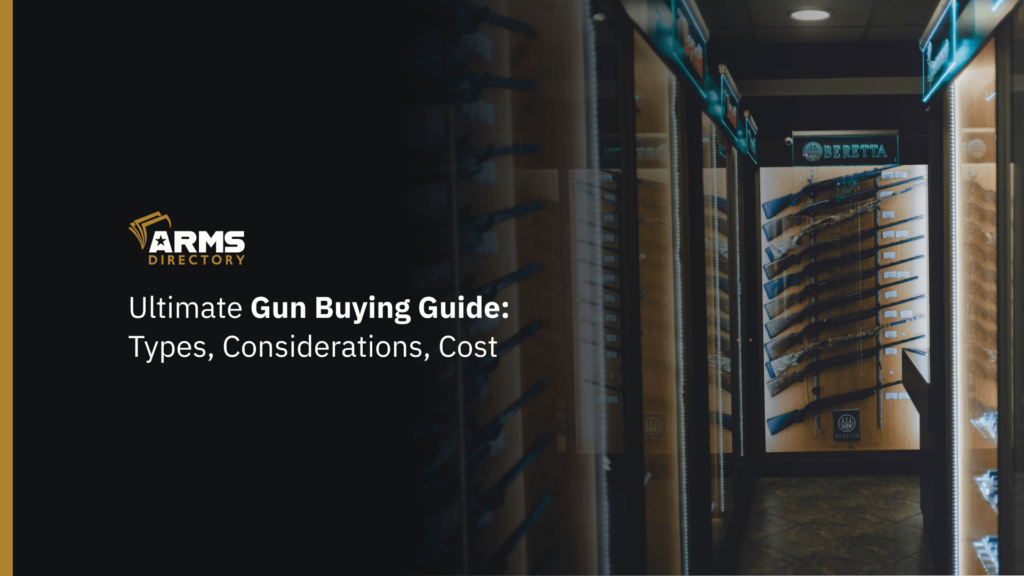
![The Right Way to Buy and Sell Firearms Online [Guide]](https://vault.armsdirectory.com/wp-content/uploads/2023/10/20050323/The-Right-Way-to-Buy-and-Sell-Firearms-Online-Guide-1-1024x576.png)
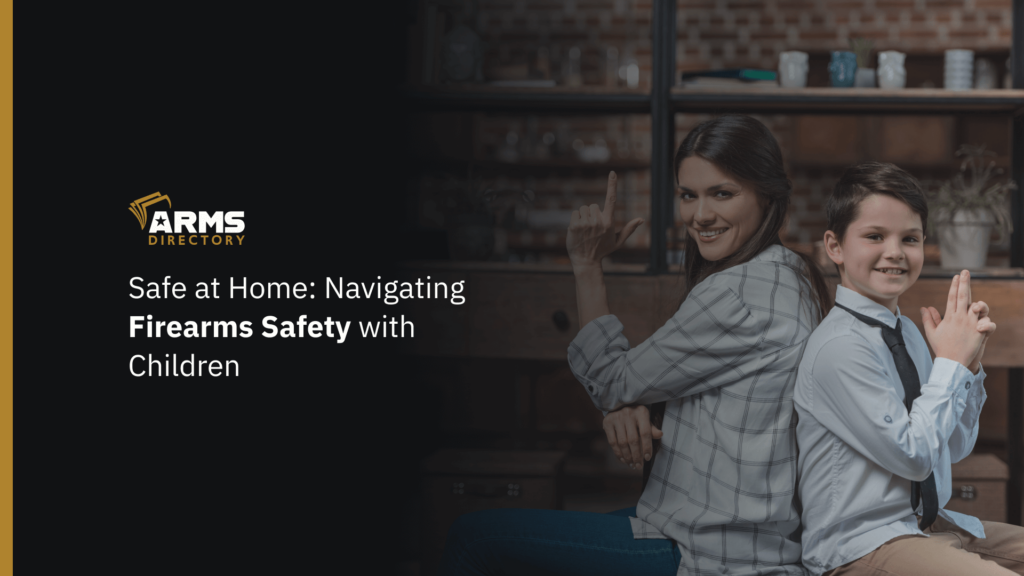
![Gun Registration Requirements by State [What You Need to Know]](https://vault.armsdirectory.com/wp-content/uploads/2023/10/27073220/Gun-Registration-Requirements-by-State-What-You-Need-to-Know-1024x576.png)
